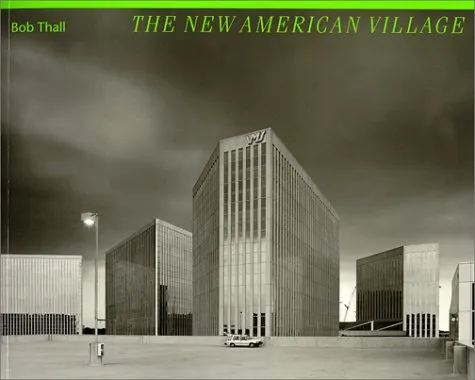The New American Village
By (author): "Bob Thall"
Publish Date:
December 17th 1999
ISBN0801861578
ISBN139780801861574
AsinThe New American Village
Original titleThe New American Village (Creating the North American Landscape)
"It may be that the developers, residents, and corporate owners of the new American village have gotten exactly what they want. Like all such rare complete triumphs, the victors are left to consider not the limits of their effort but the quality of their original vision." -- Bob ThallSince 1971, Bob Thall has made photographs that examine and interpret Chicago's urban landscape. His highly praised 1994 book, The Perfect City, documented the sweeping changes in the character of the downtown area from 1971 to 1991. Now, continuing his extensive project to photograph the Chicago metropolitan area, Thall presents a complete picture of the nationally known area around Schaumburg and O'Hare International Airport -- significant as perhaps the best example of a new type of American suburb, the "edge city."In The New American Village, Thall captures four components of the new edge city -- corporate, commercial, domestic, and environmental -- in a way that no previous photographer has achieved. To find the stark but provocatively beautiful images that appear in the book, Thall spent years exploring the western and northwestern suburbs of Chicago, photographing remnants of open land and farm structures, the process of clearing and construction, corporate headquarters, townhouse developments, model homes, office parks, strip malls, and the many aspects of nature that remain, in one way or another, in these miniature cities.Thall's photographs are not simply snapshots of raw visual facts but images full of meaning. Documenting these new American places, he draws attention to the choices being made when they are built and discovers some unexpected transformations. In an industrial parkbuilt where once there were only huge, flat fields of corn, Thall is surprised to find innumerable small lakes and ponds created by developers for flood control. While timing exposures at dusk, he recalls, geese flew so close overhead that he could feel the beat of their wings.But along with such oddly pastoral scenes, Thall finds much that is emotionally chilling. His photographs show a landscape with no pedestrian life, no old trees, and little diversity in architecture or people. "Everything, for hundreds of square miles, looked much the same to me," he writes, "the cheap standardized construction, the ceaseless flow of cars, the acres of blacktop and concrete, and the unwalkable distances across open, flat land." Always thoughtful, often striking or strangely beautiful, Thall's remarkable images capture a vast suburban world where, in ever increasing numbers, Americans are choosing to spend their lives.
